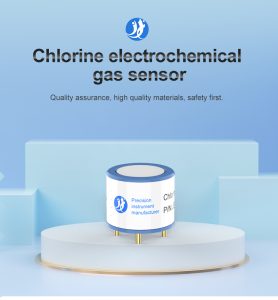Gas detectors play a crucial role in ensuring public safety by detecting and monitoring the presence of hazardous gases in various environments. From industrial settings to residential areas, gas detectors help safeguard public health by providing early warning signs of potential gas leaks and preventing accidents. This article explores the importance of gas detectors in different sectors and emphasizes their role in maintaining a healthy and safe environment for the general public.

I. Industrial Sector:
In industrial settings such as factories, chemical plants, and refineries, the risk of gas leaks is significantly higher due to the presence of various potentially dangerous substances. Gas detectors are essential tools for identifying leaked gases like methane, carbon monoxide, hydrogen sulfide, and volatile organic compounds (VOCs). By continuously monitoring the air quality, these detectors can alert workers and management to potential dangers, allowing for immediate action to mitigate risks and prevent severe health consequences.
II. Commercial and Residential Buildings:
Gas leaks in commercial and residential buildings pose significant risks to occupants. Natural gas leaks, for instance, can lead to explosions or fires. Gas detectors installed in these settings are designed to detect the presence of natural gas, propane, or butane. Timely detection of these gases enables quick intervention, evacuation if necessary, and prompt repairs to minimize harm to individuals and property.
III. Environmental Monitoring:
Beyond industrial and residential areas, gas detectors also play a vital role in environmental monitoring. They help identify and monitor pollutants released from various sources such as factories, power plants, and vehicle emissions. These detectors aid in measuring the levels of harmful gases like nitrogen dioxide (NO2), sulfur dioxide (SO2), ozone (O3), and particulate matter (PM2.5), which can have detrimental effects on public health and the environment. By providing real-time data, gas detectors contribute to pollution control measures and assist authorities in implementing effective regulations to protect public health.
IV. Occupational Health and Safety:
In workplaces where workers are exposed to potentially harmful gases, gas detectors are crucial for ensuring occupational health and safety. Industries such as mining, construction, and oil and gas require the use of gas detectors to monitor and control hazardous gas levels. These devices provide early warnings, allowing workers to take appropriate precautions, such as donning personal protective equipment or evacuating the area when necessary. By minimizing exposure to toxic gases, gas detectors contribute to reducing occupational illnesses and injuries.
V. Emergency Response:
Gas detectors are valuable tools for emergency response teams dealing with hazardous material spills, chemical accidents, or natural disasters. These detectors help identify airborne toxins, enable effective evacuation procedures, and aid in navigating through hazardous environments. By equipping emergency responders with accurate and up-to-date information on gas concentrations, gas detectors enhance their ability to assess risks and implement necessary measures to protect public health.
Conclusion:
Gas detectors are indispensable devices that play a critical role in safeguarding public health. Whether in industrial settings, commercial and residential buildings, or environmental monitoring, these detectors provide early warnings, mitigate risks, and prevent potential disasters caused by gas leaks. By ensuring the timely detection of hazardous gases, gas detectors contribute to creating safer environments for both workers and the general public. As technology continues to advance, the capabilities of gas detectors will improve, further enhancing their effectiveness in protecting public health and well-being.
 : +86 155 8830 2704
: +86 155 8830 2704 : jxdziot@gmail.com
: jxdziot@gmail.com
